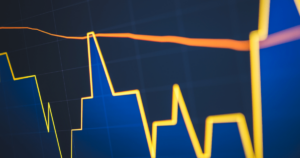Introduction
High-frequency trading (HFT) has revolutionized financial markets, utilizing powerful computer programs and complex algorithms to execute a large number of orders within seconds. In this comprehensive guide, we will delve into the intricacies of HFT, exploring its mechanics, benefits, risks, and regulatory challenges. By the end of this article, you will have a thorough understanding of high-frequency trading and its impact on the financial landscape.
What Is HFT?
High-frequency trading (HFT) gained prominence with the introduction of incentives offered by exchanges to companies that added liquidity to the market. For example, following the liquidity concerns that arose after the collapse of Lehman Brothers in 2008, the New York Stock Exchange (NYSE) introduced Supplemental Liquidity Providers (SLPs). The NYSE incentivizes companies by providing fees or rebates for adding liquidity, resulting in substantial profits due to the high number of daily transactions.
The core principle of HFT lies in its ability to execute trades at lightning speed. HFT traders utilize sophisticated algorithms to analyze multiple markets and swiftly execute orders based on market conditions. The speed at which these orders are executed is crucial, as traders with faster execution speeds tend to be more profitable than their slower counterparts.
In addition to speed, HFT is characterized by high turnover rates and order-to-trade ratios. Some of the most well-known HFT firms include Tower Research, Citadel LLC, and Virtu Financial.
How Does High-Frequency Trading Work?
To gain a deeper understanding of HFT, it is crucial to explore the mechanics behind its operation. At its core, HFT relies on powerful computer programs, sophisticated algorithms, and lightning-fast execution speeds.
Algorithmic Analysis
HFT algorithms are designed to analyze vast amounts of market data in real-time, identifying patterns, trends, and opportunities within milliseconds. These algorithms consider factors such as price movements, order book imbalances, and news sentiment to make rapid trading decisions. By leveraging advanced statistical models and machine learning techniques, HFT algorithms can swiftly react to changing market conditions and exploit short-lived opportunities.
Co-Location and Low-Latency Infrastructure
To achieve the fastest execution speeds, HFT firms often employ co-location services, placing their trading servers in close proximity to exchange servers. By reducing physical distance, data transmission times are minimized, allowing for lightning-fast order execution. Co-location also enables HFT traders to receive market data and execute trades with minimal latency, gaining a competitive edge in the market.
Additionally, HFT firms invest heavily in low-latency infrastructure, utilizing cutting-edge technology and high-speed data connections to ensure minimal delays in executing trades. These infrastructure enhancements enable HFT traders to exploit even the smallest market inefficiencies and capitalize on fleeting opportunities.
Liquidity Provision and Market Making
HFT firms play a vital role in providing liquidity to the markets. By rapidly executing a large number of orders, HFT traders add depth and liquidity to the order books, facilitating smoother trading and tighter bid-ask spreads. This increased liquidity benefits all market participants by reducing transaction costs and improving price efficiency.
Furthermore, HFT firms often engage in market-making activities. Market makers continuously quote both buy and sell prices for specific securities, ensuring that there is always a counterparty available for traders looking to buy or sell. This improves market efficiency and reduces the impact of large orders on prices, benefiting both institutional and retail investors.
High-Frequency Forex Trading
While HFT is most commonly associated with equity markets, it has also made significant inroads into the foreign exchange (forex) market. High-frequency forex trading involves the same principles as equity-based HFT but focuses on currency pairs. The forex market’s decentralized nature and high liquidity make it an attractive playground for HFT strategies.
HFT in the forex market capitalizes on price discrepancies across multiple currency pairs and takes advantage of fleeting opportunities that arise due to rapid price movements. The lightning-fast execution speeds of HFT enable traders to exploit these momentary inefficiencies and generate profits.
Benefits of High-Frequency Trading (HFT)
High-frequency trading (HFT) offers several potential advantages that benefit market participants and contribute to the overall efficiency of financial markets. Let’s explore some of the key benefits:
Speed
HFT allows traders to execute trades within fractions of a second. By leveraging advanced technology and low-latency systems, HFT firms can react quickly to market changes and exploit short-lived opportunities that may arise due to price discrepancies or other factors. The speed advantage of HFT enables traders to capture profits in rapidly changing market conditions.
Liquidity Provision
HFT firms often play a significant role in providing liquidity to the market. They frequently place a large volume of orders, both buy and sell, which helps ensure there is a consistent flow of trading activity. This increased liquidity can narrow bid-ask spreads, making it easier and more cost-effective for other market participants to buy or sell securities. Improved liquidity enhances market efficiency and reduces the impact of large orders on prices.
##Risks and Challenges of High-Frequency Trading (HFT)
While high-frequency trading (HFT) offers various benefits, it also poses certain risks and challenges to the financial markets. It is essential to understand these aspects to have a comprehensive view of HFT. Let’s explore some of the key risks and challenges associated with HFT:
Market Volatility Amplification
HFT’s ability to execute trades at lightning speed can amplify market volatility, especially during periods of high market stress or instability. The rapid buying or selling activity by HFT firms can exacerbate price movements, leading to increased market volatility. This volatility amplification can potentially disrupt market stability and pose risks to other market participants.
Technology and Infrastructure Risks
HFT heavily relies on advanced technology and complex infrastructure. Any technological glitch, system failure, or connectivity issue can have severe consequences for HFT firms. A minor technical malfunction can result in significant financial losses or even disrupt market operations. The reliance on technology also introduces the risk of cyberattacks, which can compromise market integrity and investor confidence.
Regulatory and Compliance Challenges
The rapid evolution of HFT has presented regulatory challenges for market authorities worldwide. Regulators aim to strike a balance between promoting market efficiency and safeguarding investor interests. Implementing effective regulations to monitor and control HFT activities while ensuring fair and orderly markets is a complex task. Regulators need to address concerns such as market manipulation, front-running, and potential systemic risks associated with HFT.
Unequal Access to Market Data and Infrastructure
HFT firms often have access to advanced market data feeds and low-latency infrastructure, giving them a competitive advantage over other market participants. This unequal access to resources can raise concerns about fairness and create an uneven playing field in the markets. Regulators and market participants need to consider measures to ensure equitable access to market data and infrastructure to maintain market integrity.
Increased Complexity and Systemic Risk
The proliferation of HFT has added complexity to financial markets. The interconnectivity of HFT strategies and the speed at which trades are executed can create a highly intricate web of interactions. This complexity increases the potential for unforeseen risks and the potential for systemic events. A malfunction or failure in one HFT system could have cascading effects throughout the market, leading to widespread disruptions.
Regulation of High-Frequency Trading
Given the risks and challenges associated with high-frequency trading (HFT), regulators worldwide have implemented various measures to monitor, control, and enhance the transparency of HFT activities. Let’s explore some key regulatory initiatives:
Market Surveillance and Monitoring
Regulators employ sophisticated surveillance systems to monitor HFT activities and detect any irregularities or potential market abuses. These surveillance systems use advanced algorithms and data analysis techniques to identify patterns that may indicate manipulative or disruptive trading practices. By actively monitoring HFT activities, regulators can take prompt action to maintain market integrity.
Order-to-Trade Ratio Limits
To manage the impact of high order volumes generated by HFT, regulators have imposed order-to-trade ratio limits. These limits restrict the number of orders that can be placed relative to the number of executed trades. By controlling the ratio, regulators aim to prevent excessive order activity that may disrupt market stability and create unfair advantages for HFT firms.
Market Access Controls
Regulators have implemented measures to ensure that HFT firms meet specific criteria and adhere to regulatory requirements before accessing the market. These controls may include registration requirements, capital adequacy standards, and risk management obligations. By imposing such controls, regulators can mitigate the entry of inexperienced or undercapitalized HFT firms that may pose risks to market stability.
Circuit Breakers and Trading Halts
To address concerns related to HFT-induced market volatility, regulators have introduced circuit breakers and trading halts. These mechanisms temporarily pause trading activity in response to significant price movements or abnormal market conditions. Circuit breakers provide time for market participants to assess the situation and prevent further destabilization. Trading halts help restore order and allow markets to stabilize before resuming normal trading operations.
Global Coordination and Cooperation
As HFT transcends national borders, regulatory efforts have focused on global coordination and cooperation. Regulators collaborate to share information, best practices, and regulatory frameworks to ensure consistent oversight of HFT activities. International forums and organizations facilitate dialogue and cooperation among regulators to address the global nature of HFT and its potential impact on interconnected markets.
Common Questions about High-Frequency Trading
1. Does HFT contribute to market manipulation?
HFT can potentially contribute to market manipulation if employed with malicious intent. However, regulatory authorities employ surveillance systems and strict monitoring to detect and deter such activities. The vast majority of HFT is conducted within legal and ethical boundaries, contributing to market efficiency and liquidity provision.
2. How does HFT impact retail investors?
HFT can benefit retail investors by improving liquidity and narrowing bid-ask spreads. The increased liquidity resulting from HFT activities can enhance the efficiency of markets, enabling retail investors to execute trades more easily and at more favorable prices. However, retail investors should be aware of potential market volatility








